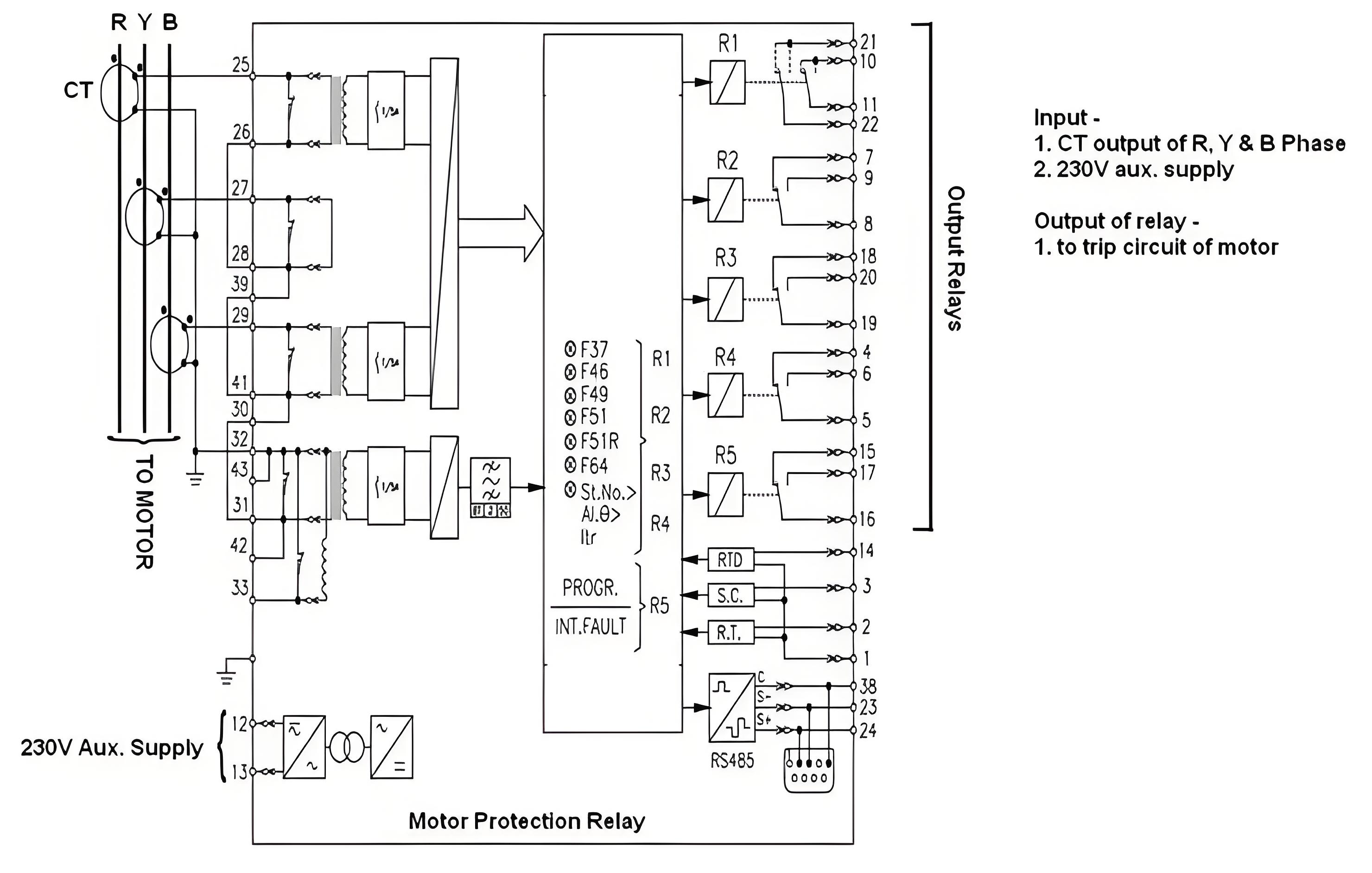What is a Motor Protection Relay?
What is a Motor Protection Relay?
Motor Protection Relay Definition
A motor protection relay is a device used to detect faults and protect high voltage induction motors by isolating faulty parts.
Common Failures
Motors can fail due to thermal stress, single phasing, earth faults, short circuits, locked rotors, and bearing issues.
HT Motor Protection
Motor protection relays for high voltage motors provide protections like thermal overload, short circuit, single phasing, and earth fault protections.
Motor Protection Relay Characteristic
Thermal overload protection
Short circuit protection
Single phasing protection
Earth fault protection
Locked rotor protection
Number of start protection
For setting of the relay we require the CT ratio and full load current of the motor. The setting of different element is listed below
Thermal over Load Element
To set this element we have to identify the % of Full load current on which the motor is running continuously.

Short circuit Element
The range available for this element is 1 to 5 times of starting current. Time delay is also available. We normally set it at 2 times of starting current with a time delay of 0.1 second.
Single Phasing Element
This element will operate, if there is an unbalance in current of three phases. It is also called as unbalance protection. The element is set for 1/3rd of starting current. If it tripped during starting, then the parameter will changed to 1/2 of starting current.
Earth Fault Protection
This element measures the neutral current of star connected CT secondary. The range available for this element is 0.02 to 2 times of CT primary current. Time delay is also available. We normally set at 0.1 times of CT primary current with a time delay of 0.2 seconds. If tripped during starting of motor, then the time setting can be raised to 0.5 sec.
Locked rotor protection
The range available for this element is 1 to 5 times of full load current. Time delay is also available. We normally set at 2 times of FLC (Full Load Current). The time delay will be more than the starting time of the motor. “Starting time means the time require by the motor to reach its full speed.”
Number of hot start protection
Here we will provide the number of start allowed in specified time duration. By this we will limit the number of hot starts given to the motor.
Advanced Relay Features
Modern digital relays offer additional protections such as no-load running protection and temperature monitoring for enhanced motor safety.
Schematic diagram of the motor protective relay

The Electricity Encyclopedia is dedicated to accelerating the dissemination and application of electricity knowledge and adding impetus to the development and innovation of the electricity industry.













